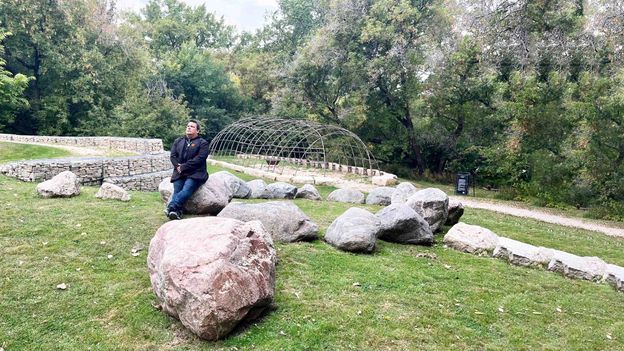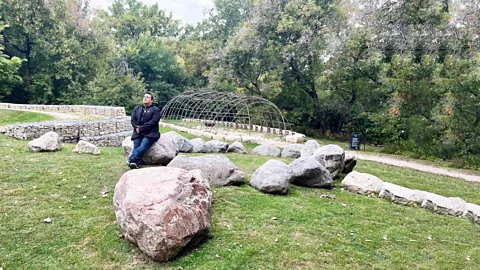 Steve Lyons
Steve LyonsLocal Anishinaabe writer Professor Niigaan Sinclair guides you through Winnipeg’s Indigenous history and community from healing ceremonies at The Forks to Bannock pizza at Feast Café.
Winnipeg, the capital city of Canada’s Manitoba province, marks its 150th birthday in 2024, but its history goes back much further than that. Both archaeological findings and oral histories passed down through generations indicate that Indigenous peoples have been inhabiting the area for nearly 6,000 years.
Today, visitors flock to Winnipeg for its world-renowned museums, festivals, parks and the welcoming spirit reflected in the province’s license plate motto: “Friendly Manitoba”. But for millennia, the area now known as Winnipeg — the city was incorporated and named in 1873 — was a hub where Indigenous nations like the Cree, Ojibwe, Dakota, Ojibwe-Cree and Dene would gather to hold ceremonies, trade goods and share knowledge.
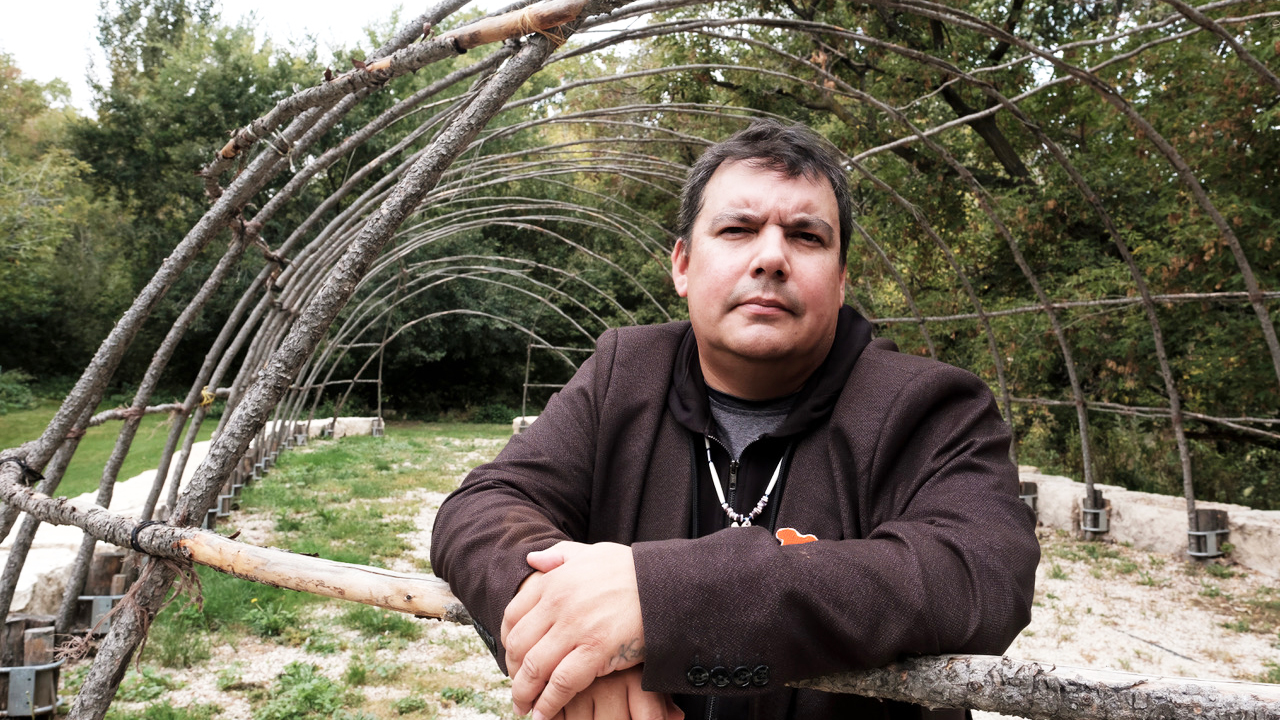
We asked Niigaan Sinclair, professor of Indigenous Studies at the University of Manitoba, to tell us the best places where visitors can explore Winnipeg’s Indigenous history. For Sinclair, a member of the Anishinaabe (Ojibwa) Nation, Winnipeg remains an epicentre of Indigenous values. And because the city is home to the largest Indigenous population in Canada, where one in five people are Indigenous, he believes it is ground zero for reconciliation between cultures.
“Name me a place where reconciliation has been in activity the longest, and it’s Manitoba,” says Sinclair, noting the first of the numbered treaties (Treaty 1) between the Canadian government and Canada’s Indigenous people was signed in 1871 at Lower Fort Garry, 20 miles north of Winnipeg. “I do all the things that I do because I think Winnipeg is a remarkable place.”
Here is Sinclair’s guide to Indigenous Winnipeg.
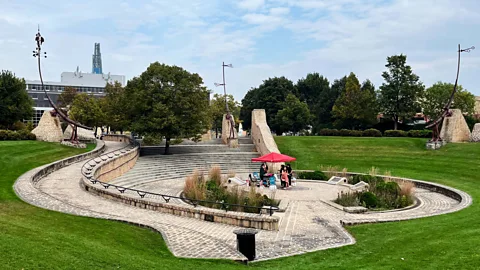 Steve Lyons
Steve Lyons1. Best place to experience an Indigenous celebration: The Forks
Tip:
Winnipeg is sometimes playfully called “Winterpeg”, so expect freezing temps in the winter. Sinclair, however, encourages embracing Biboon; the Anishinaabe word for winter. “We really enjoy our summers, but we are very dedicated to winter,” he says. “It makes up the culture of the city.”
Two winter suggestions from Sinclair are the Festival du Voyageur in February, which celebrates the history of Francophones, Métis and First Nations in Manitoba; and getting out on the Nestaweya River Trail where Winnipeggers gather to skate, walk, bike, cross country ski and snowshoe.
“It’s become the Indigenous centre of Winnipeg,” says Sinclair. “Anything that happens in the community of significance is often held there … that’s why I love it so much.”
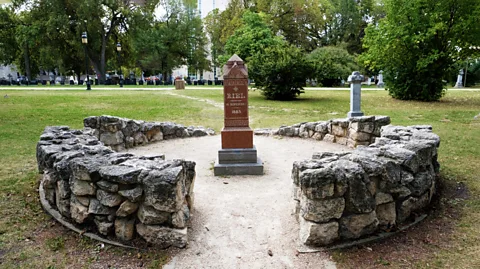 Phil Hossack
Phil Hossack2. Best place to learn about the Métis Nation: Saint Boniface
The Métis – one of Canada’s three recognised Indigenous peoples – are a distinct Indigenous people with both First Nations and Euro settler (mostly French) ancestry that arose in the late 1700s in Western Canada. Today, it is estimated there are 450,000 Métis Nation citizens in Canada, with approximately 48,000 living in Winnipeg.
Perhaps the most famous Métis historical figure is Louis Riel, born in Winnipeg’s Saint Boniface neighbourhood in 1844. The heart of Manitoba’s Francophone community and the Francophone capital of Western Canada, Saint Boniface is located directly across the Red River from the Forks and downtown Winnipeg; accessible by walking across the beautiful Esplanade Riel Footbridge.
Riel was a central figure in the 1869-70 Red River Resistance that saw Metis people challenge the nascent Canadian government in an ill-fated bid for self-determination. Riel advocated for the culture of the Métis people and challenged Canadian government policies regarding language, religion and land rights, ultimately resulting in his execution for treason in 1885. In 2016, the government of Manitoba recognised Riel as the first leader of Manitoba.
Riel’s gravesite is on the grounds of Saint Boniface Cathedral, built in 1832. “I spend a lot of time visiting Riel’s grave,” says Sinclair. “At least yearly, I go there to pay my respects and lay some tobacco. To understand how Manitoba and Winnipeg came to be, you have to know the story of the Métis and Louis Riel.”
 Assiniboine Park Conservancy
Assiniboine Park Conservancy3. Best green space: The Leaf
Located in the 1,100-acre Assiniboine Park – the largest park in Winnipeg – The Leaf is a horticultural attraction that houses four indoor plant biomes and more than 12,000 trees, shrubs and flowers from around the world. It is home to Canada’s tallest indoor waterfall and a beautiful butterfly garden.
The Leaf is also where Wab Kinew was sworn in as the first First Nations premier of a province in Canadian history in 2023 during a ceremony that honoured the seven Indigenous nations in Manitoba, along with his 15-member cabinet; eight of whom are people of colour, seven are female or non-binary, five are Indigenous and two are LGBTQ.
“It was such a beautiful thing to see,” Sinclair says. “The first First Nations premier, the first openly queer deputy premier and the most-ever Indigenous women (two) in cabinet … just amazing.”
The Leaf features five outdoor themed gardens, including the Indigenous Peoples’ Garden that was created through a collaborative process involving Indigenous elders, designers and community leaders. Two areas within the garden acknowledge the importance of water and fire, with signage showing translation of “where the water is” and “where the fire is” in seven Indigenous languages.
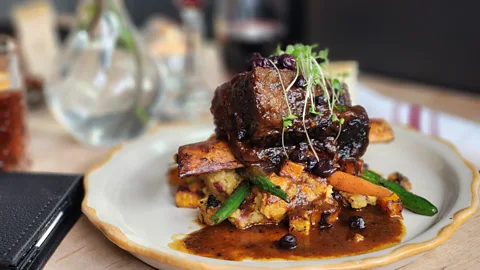 Feast Café Bistro
Feast Café Bistro4. Best place to enjoy Indigenous cuisine: Feast Café Bistro
“Whenever I do speeches, people always seem to give me gift cards and they’re almost always to Feast, which is great. I love the place,” Sinclair says.
Feast – helmed by Winnipeg local Christa Bruneau-Guenther, a French Métis and a proud member of Peguis First Nation – is one of a growing number of contemporary restaurants in Winnipeg where chefs offer modern dishes celebrating traditional ingredients like wild game, beans, squash and corn. Some of Feast’s signature recipes feature bannock, a quick bread that has become a staple in Canada’s Indigenous communities since being introduced by Scottish and Irish settlers. Like a pizza made with a bannock-bread crust and assorted variations of eggs “banny”; Bruneau’s take on eggs Benedict served on bannock instead of an English muffin.
“Christa is wonderful. So talented. It’s the best place for Indigenous food,” Sinclair says. “She’s a very big supporter of the community … just a wonderful person, who is so worth supporting.” He recommends Feast’s wild rice soup or “whatever they are doing with Bison that week.”
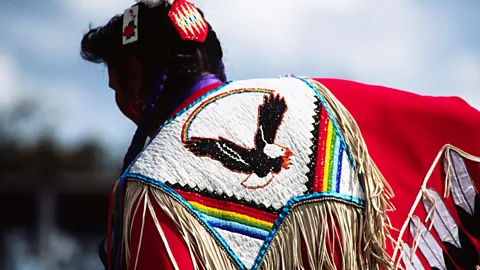 Alamy
Alamy5. Best festival: Manito Ahbee
There’s perhaps no better gathering in Winnipeg to experience Indigenous culture and heritage than the Manito Ahbee Festival.
Named after a sacred site in Manitoba’s Whiteshell Provincial Park, where ancient petroforms (human-made shapes and patterns made by arranging large rocks) illustrate teachings of elders, around 25,000 people annually attend the four-day event typically held in May that celebrates music, dance, food and crafts with a mission to unify, educate and inspire.
A festival highlight is the Manito Ahbee International Pow Wow, where hundreds of drummers, dancers and singers compete for prize money in the one of the continent’s largest competitive pow wows; a celebration of Indigenous culture through dance, music and regalia.
There’s also a marketplace where local Indigenous vendors sell beads and regalia supplies, clothing, jewelry, blankets, books and art.
“The trade show is the real hidden gem of the festival,” says Sinclair. “It’s a gathering of the greatest Indigenous crafters, jewellers and artists in the province.
“All my medallions, all my pins that I wear with my suits, I buy them all at Manito Ahbee,” he adds.
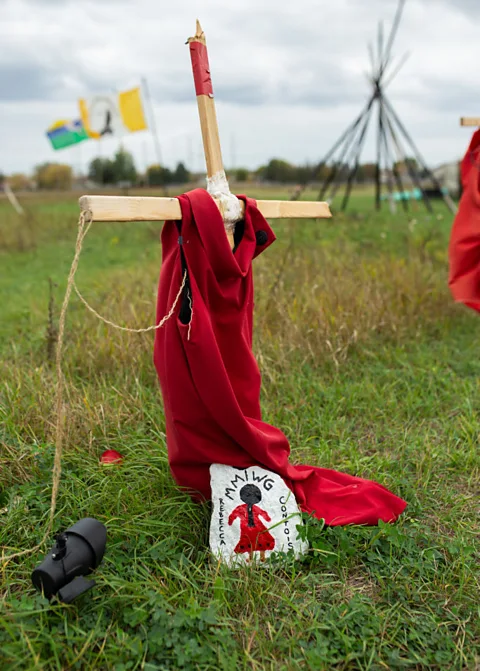 Getty Images
Getty Images6. Best Indigenous arts exhibit: REDress Project
“There are multiple Indigenous exhibits at the [Canadian Museum for Human Rights],” says Sinclair. “But one of the highlights is to go and see the murdered and missing women and girls exhibit which features Jaime Black’s REDress Project.”
In 2011, Métis artist Jaime Black created a display of red dresses at the University of Winnipeg to draw attention to the MMIWG2S+ movement, which highlights violence against Indigenous women, girls and two-spirit individuals in Canada and the United States.
Since then, the project has drawn international attention and was shown at the Smithsonian’s National Museum of the American Indian before becoming a permanent exhibit at Winnipeg’s Canadian Museum for Human Rights. It also inspired Red Dress Day (5 May) – also known as National Day of Awareness for Missing and Murdered Indigenous Women and Girls and Two-Spirit People.
There are many reminders of the MMIWG2S+ issue throughout Winnipeg: signs, license plates, homemade posters, graffiti, people hanging red dresses in their yards and a number of monuments.
“The issue is elsewhere of course, but the most innovative ways of addressing it come from Winnipeg,” Sinclair says. “The community is fully engaged with wanting to deal with this issue.”
BBC Travel’s The SpeciaList is a series of guides to popular and emerging destinations around the world, as seen through the eyes of local experts and tastemakers.

